Making homemade chicken broth is easy. Simply place the ingredients in a large pot, bring them to a boil, then simmer. The longer you simmer, the richer the broth. You can enjoy it as is or use it as a base for many different recipes.
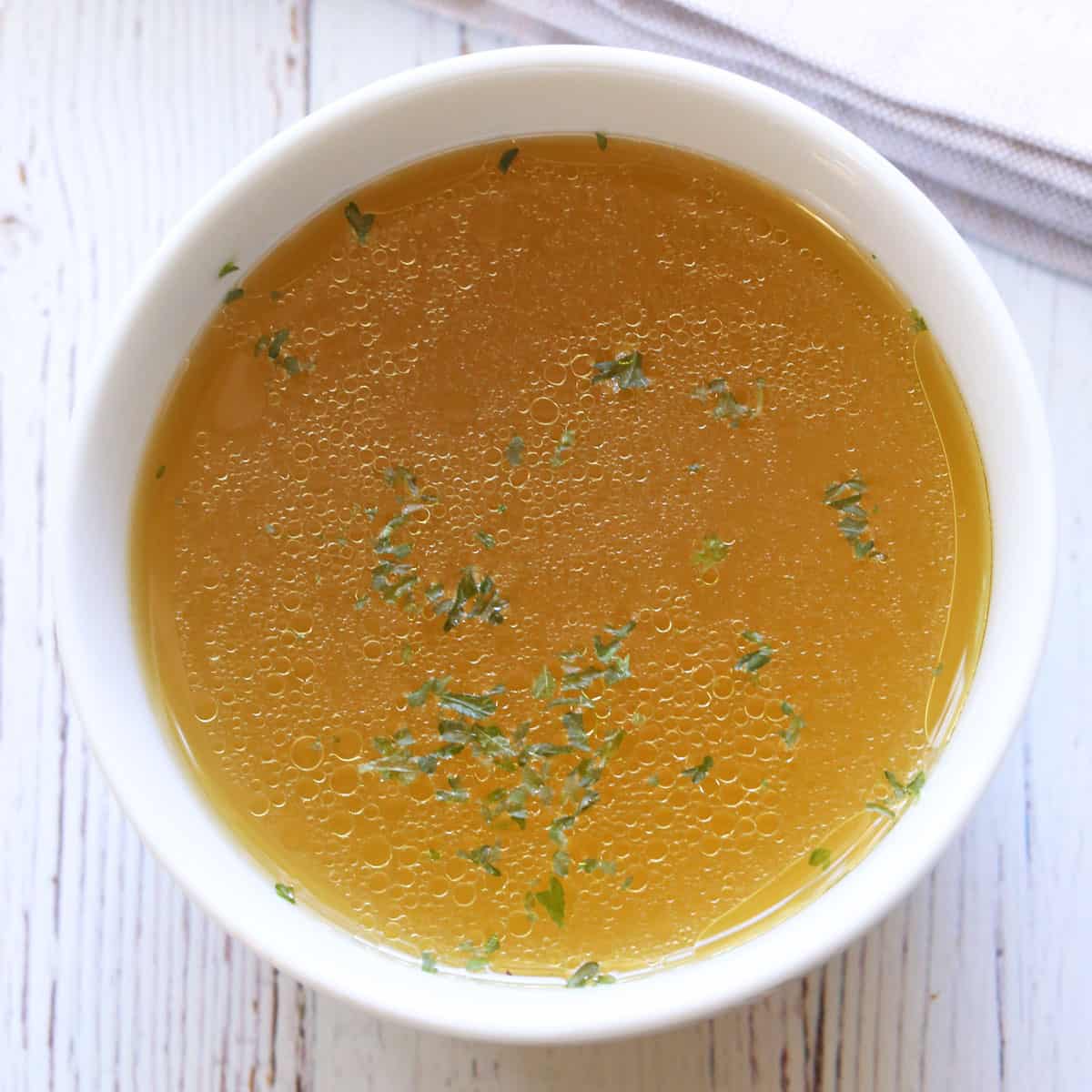
Once you've made this amazingly flavorful chicken broth from scratch, you won't be able to ever go back to the canned version, except as a base for other recipes. There's no comparison! The best part? It's so easy. You simply dump a few ingredients into a large pot, fill it with water, and turn on the heat. A few hours later, enjoy a cup of rich, warm, comforting broth!
Ingredients
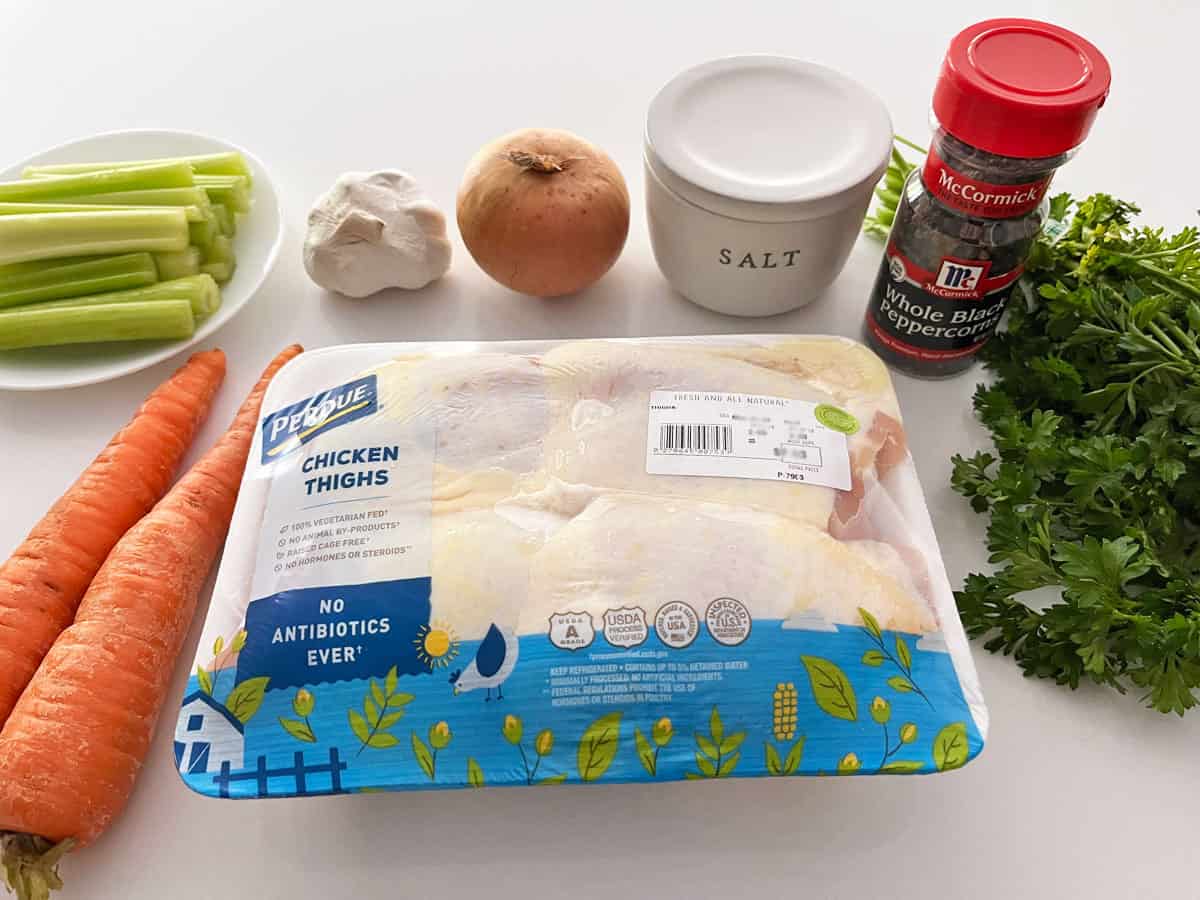
See the recipe card for exact measurements. Here are my comments on some of the ingredients.
Fresh chicken: Use bone-in, skin-on chicken pieces. They give the broth flavor and richness. I typically use chicken drumsticks or chicken thighs.
Vegetables and herbs: Onion, garlic cloves, carrots, celery, and parsley. Other options include leeks, mushrooms, and fresh herbs such as oregano and thyme. These produce a broth that tastes quite different from my childhood broth, but they are a nice variation on the classic recipe.
Instructions
The detailed instructions and step-by-step photos are included in the recipe card. Here's a quick overview.
Place the chicken in a large stockpot.
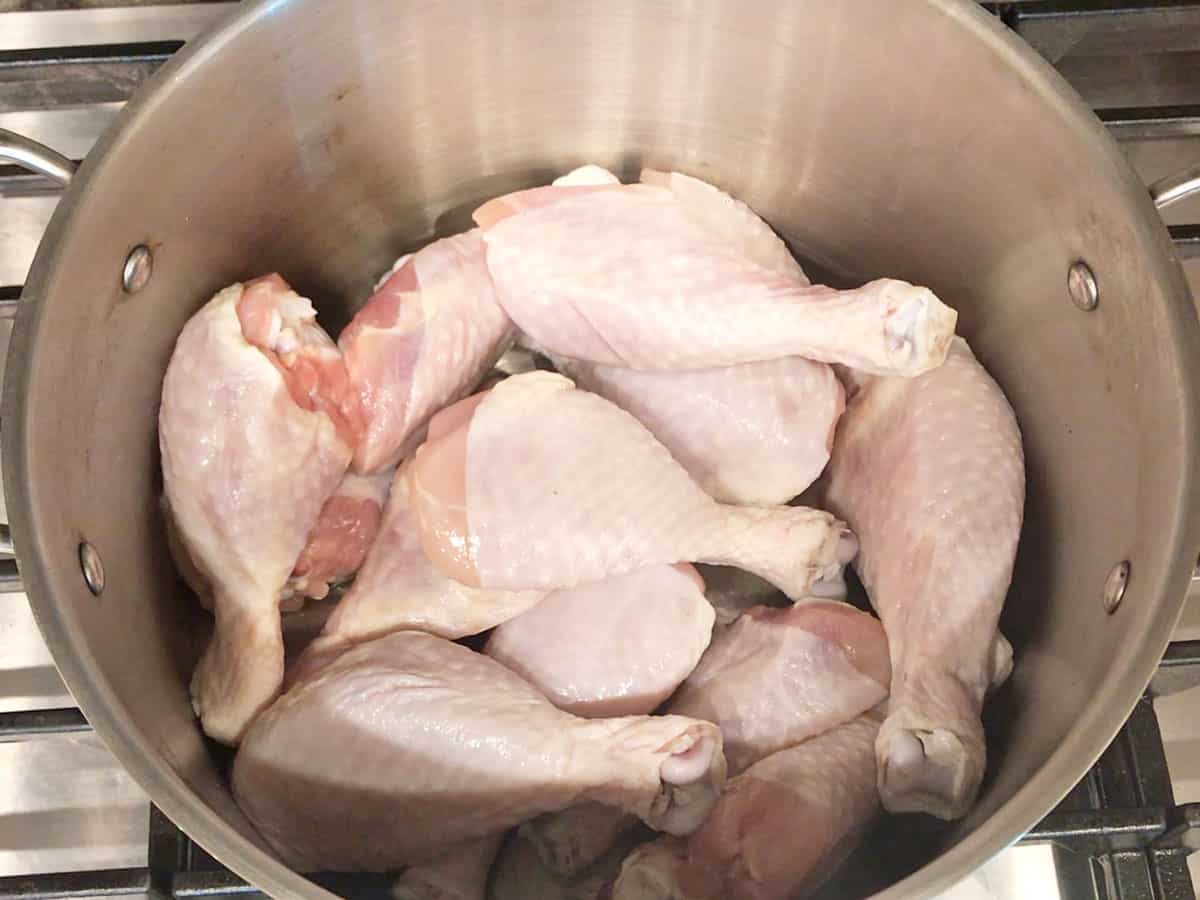
Add the vegetables, herbs, salt, and pepper. Cover with water and bring to a boil. Using a spoon, skim the foam from the top of the broth. Reduce the heat, partially cover, and simmer for 3 hours.
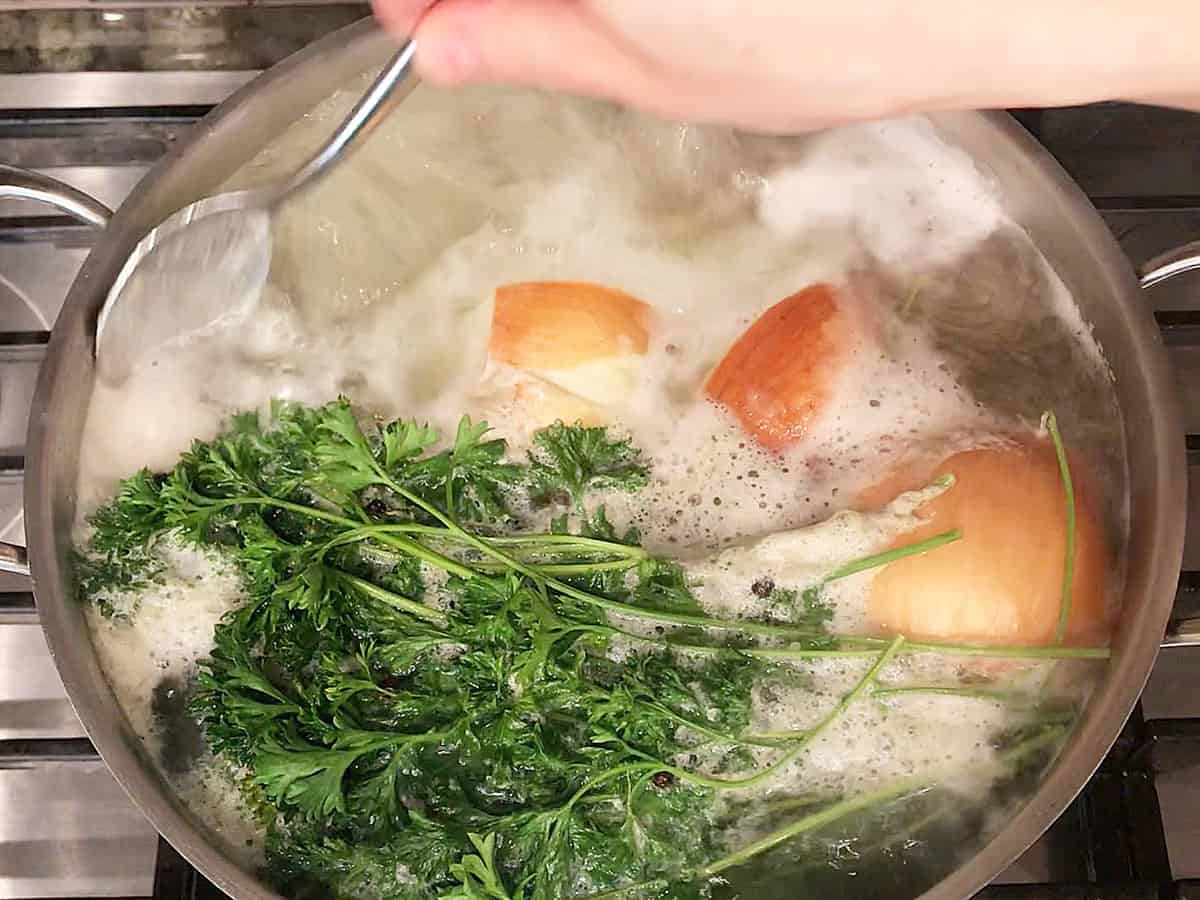
Remove the solids from the broth with a large slotted spoon, then strain it using a colander. Serve immediately.
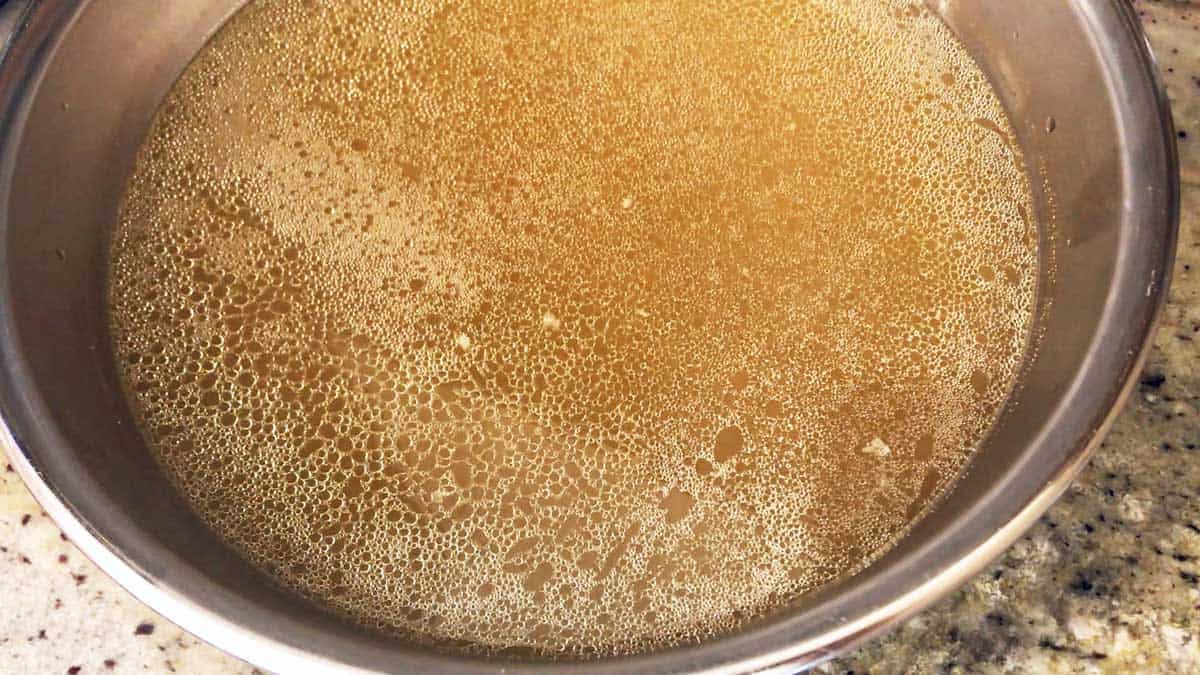
This was absolutely DELICIOUS! I’m feeling sick, and this looked like a quick broth recipe. I was skeptical because it’s been a while since I’ve done homemade broth, and I remember them being 10 hours? This was very flavorful, and I plan on making a bunch and freezing for soups or to have on hand!! Truly, this is one of the best homemade broth recipes I’ve ever had.
Grace
Read more comments
Recipe Tip: Skimming the Fat
This is what the broth looks like when it's ready. You can see the fat droplets on its surface:
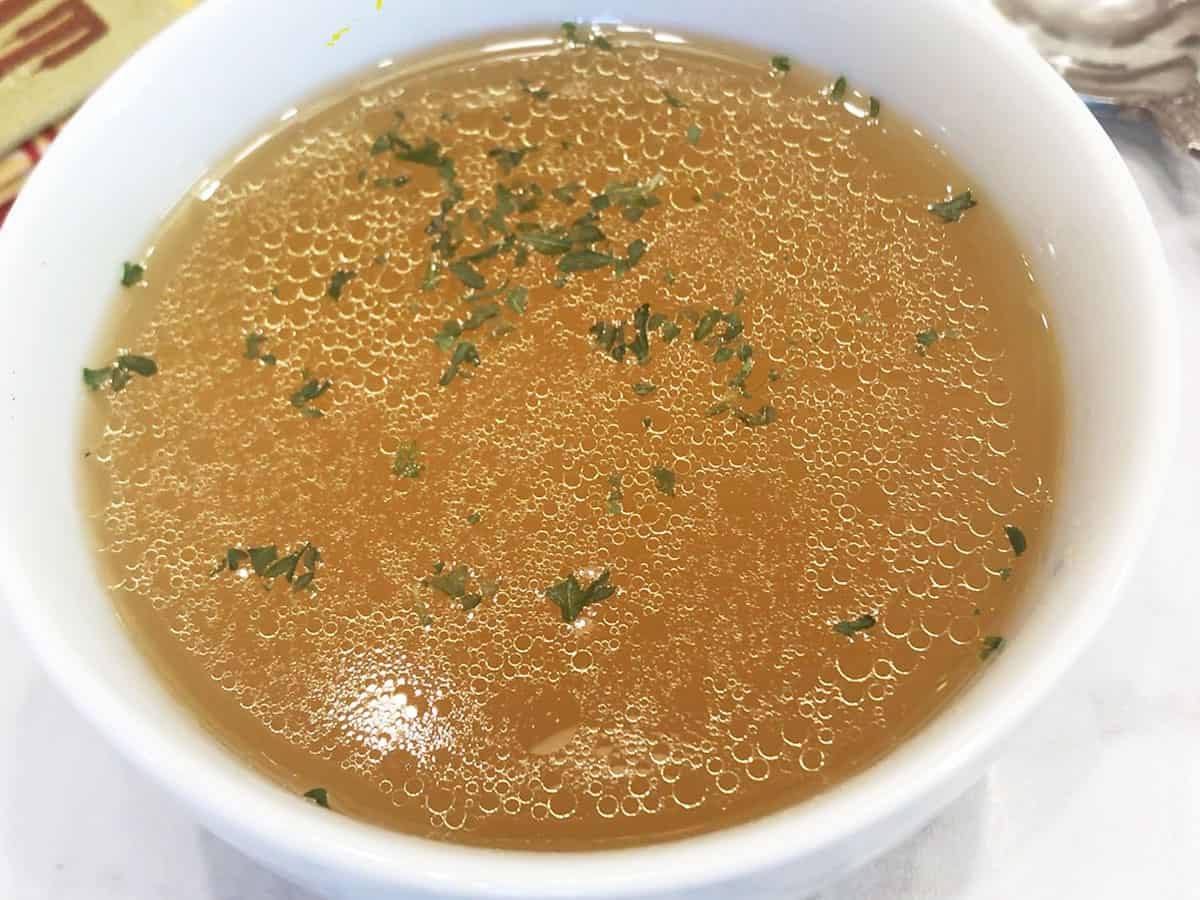
Many people remove this fat. I don't. It's delicious. If you want to remove it and do it efficiently, it's best to chill the soup first. Once chilled, you can easily remove the congealed fat layer from the top. Here are my refrigerated jars of broth. You can see the fat layer on top. It's easy to remove with a spoon.
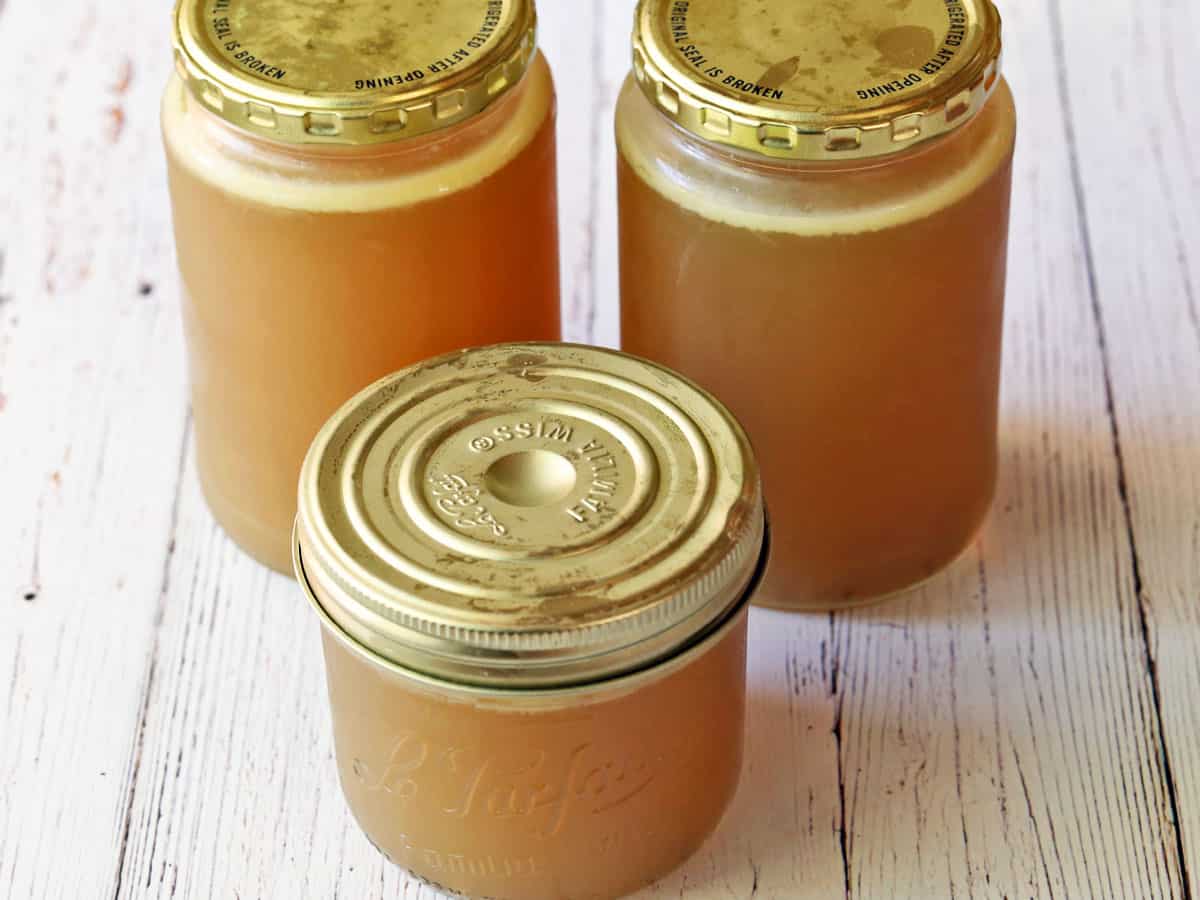
Recipe FAQs
The longer you simmer the broth, the richer and tastier it will be, and the drier the meat. One option is to just throw the chicken out. But if you can't bring yourself to do that, use it in these chicken patties.
Skimming the foam from the top of the broth at the start of cooking ensures clearer broth.
No. They are too lean. For the best, richest, most flavorful results, use bone-in dark meat pieces like drumsticks, thighs, and wings.
Chicken broth keeps well in an airtight container in the fridge for about five days. You can also divide some of it into individual portions and freeze them in 1-cup containers. 8-ounce mason jars work well for this purpose.
The vegetables will be limp and lifeless at this point. They have fulfilled their role and can now be discarded. If you want to serve your broth with vegetables, add them after the broth is ready and cook them just until they are tender-crisp.
Serving Suggestions
This rich broth is delicious as is. I keep portions of it in mason jars and reheat them in the microwave. I simply drink it from a mug. But you can serve it in a bowl and add all kinds of things. My Israeli grandma used to serve hers with egg noodles:
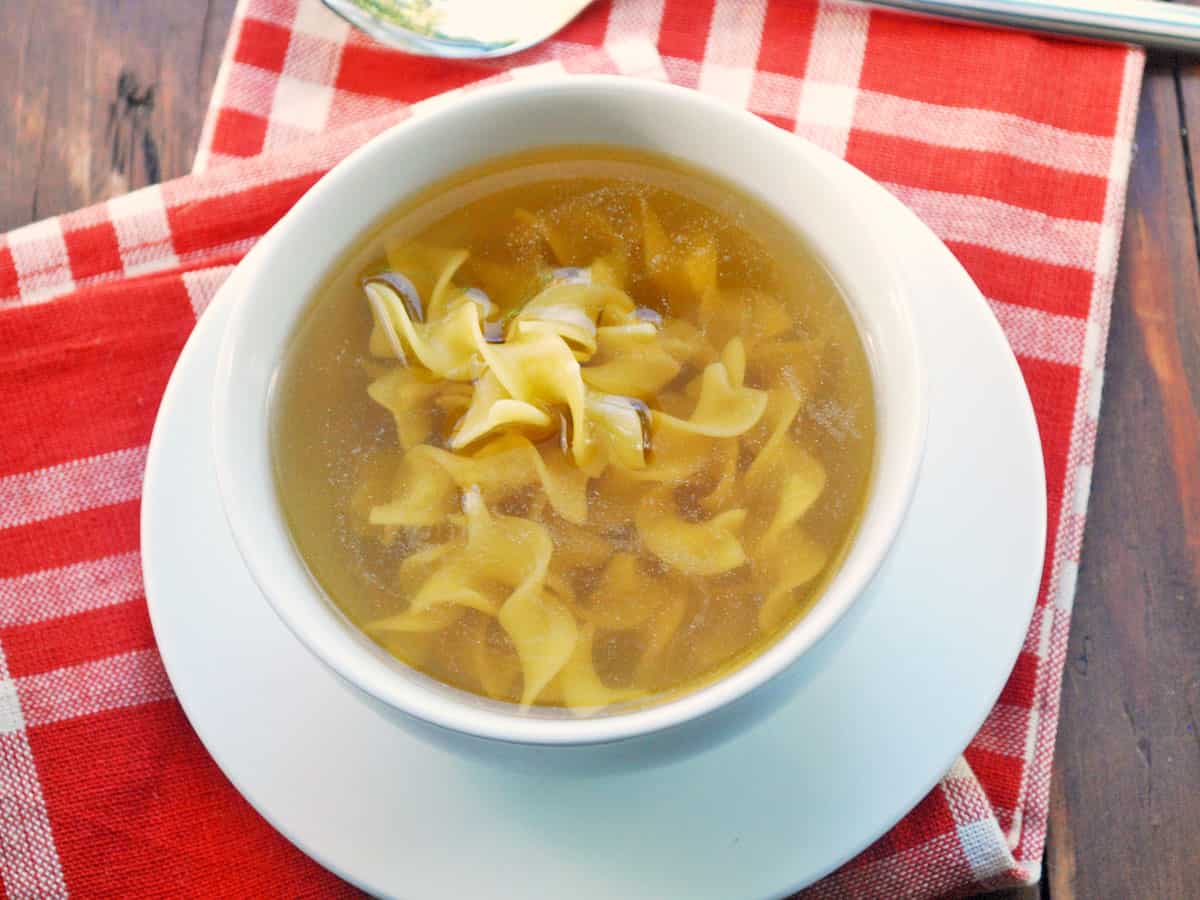
Or matzo balls:
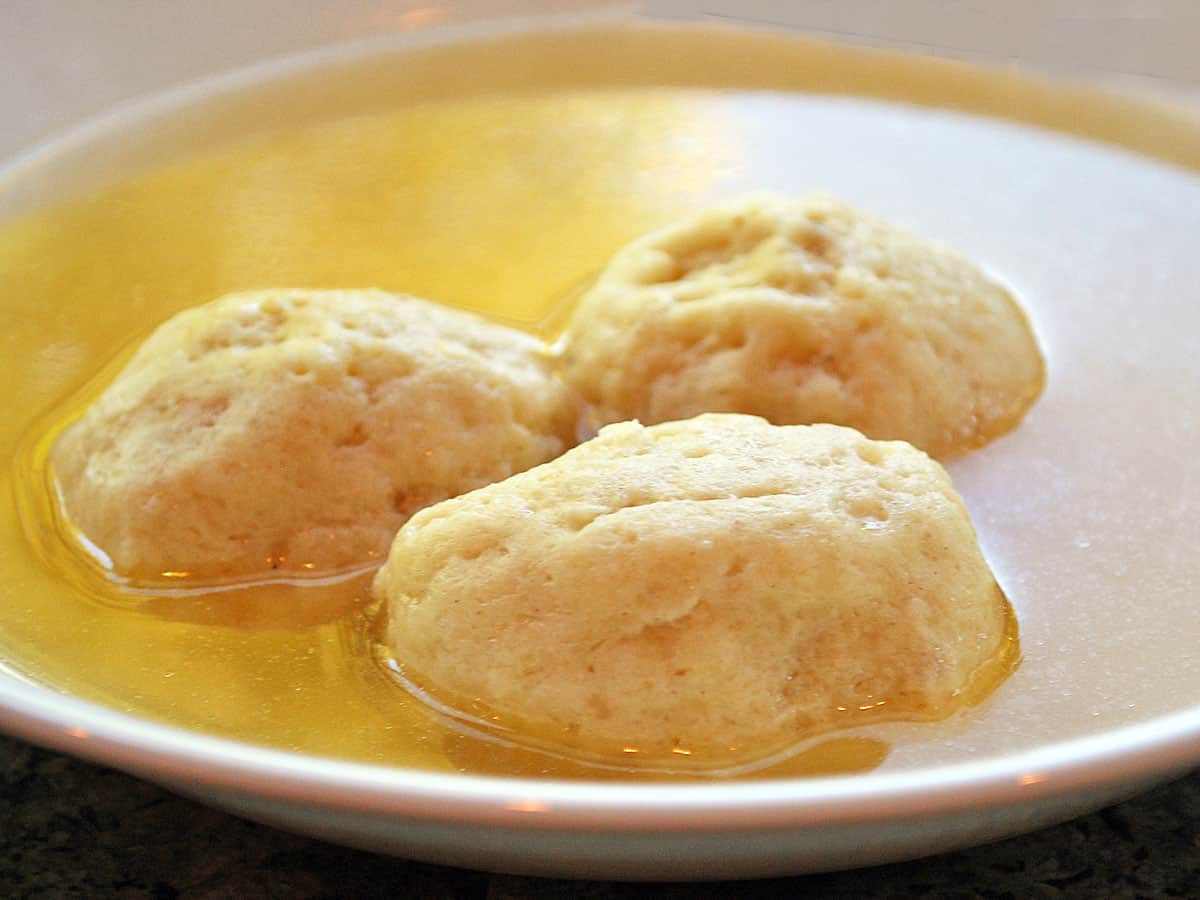
My Dutch grandma served it with tiny cooked meatballs and no starches or veggies. My father loads his with cooked shredded chicken and lots of vegetables, and my mother-in-law serves hers with cooked white rice.
Want more ideas? Add plain cooked shirataki noodles (omit the butter and Parmesan) or zucchini noodles (add them raw, and they will cook in the hot broth). You can also turn this broth into egg drop soup.
Recipe Card
Homemade Chicken Broth
Video
Ingredients
- 4 pounds chicken pieces - bone-in, skin-on
- 1 large onion - quartered
- 4 garlic cloves - unpeeled
- 2 large carrots
- 2 celery stalks - cut into thirds
- 1 small bunch parsley
- 2 tablespoons Diamond Crystal kosher salt - or 1 tablespoon of any other salt, including Morton kosher salt
- 1 teaspoon whole black peppercorns
- 3 quarts water
Instructions
- Place the chicken, onion, garlic, carrots, celery, parsley, kosher salt, black peppercorns, and water in a large, heavy-bottomed stockpot. Bring to a boil. It should take about 20 minutes for the water to reach a boil.
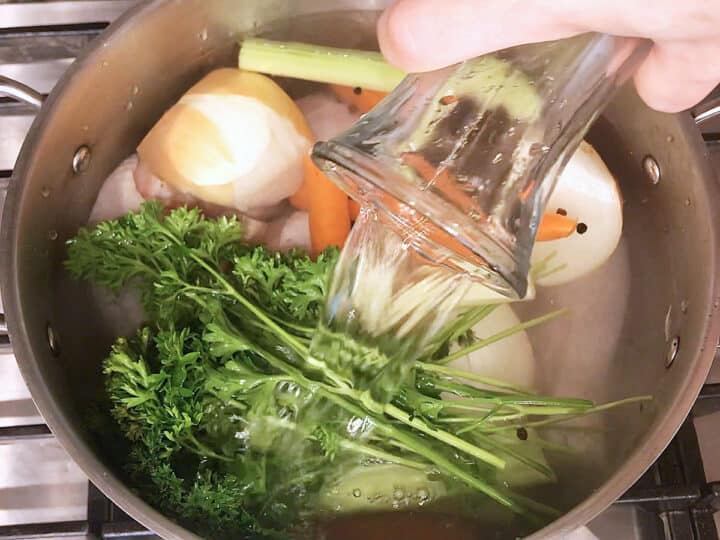
- Skim the foam layer from the top with a spoon, then reduce the heat to medium-low.
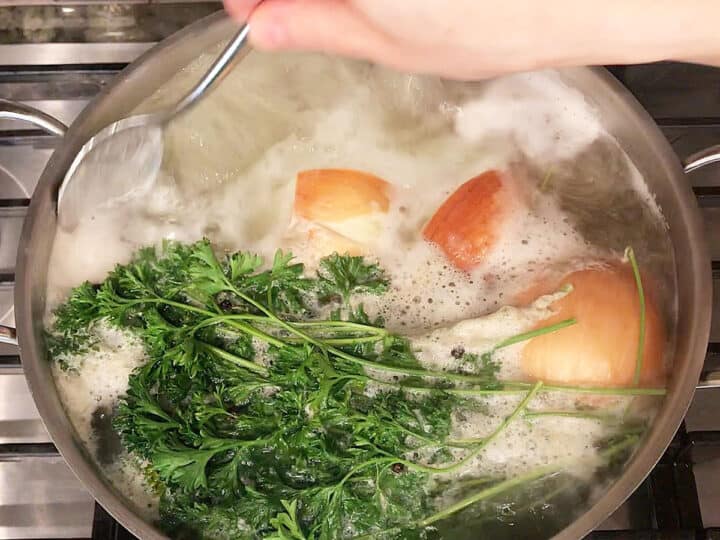
- Partially cover the pot and simmer the broth for 3 hours. Check the soup periodically to ensure it maintains a slow, steady simmer rather than reaching a boil.
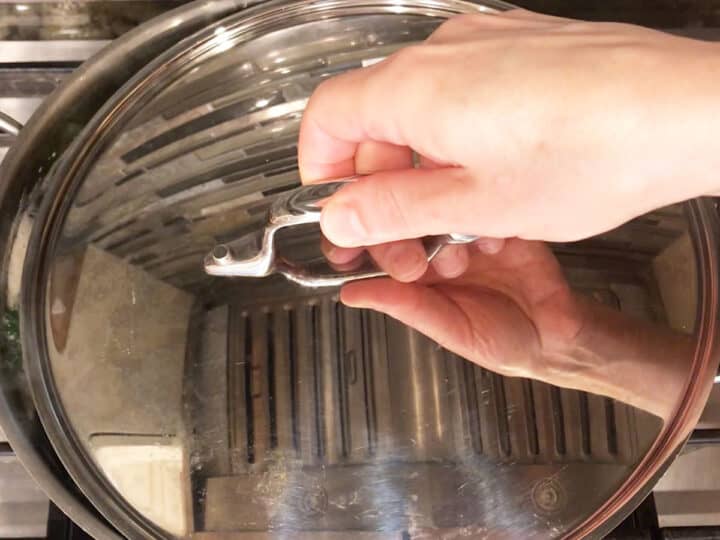
- Remove the solids using a large slotted spoon.
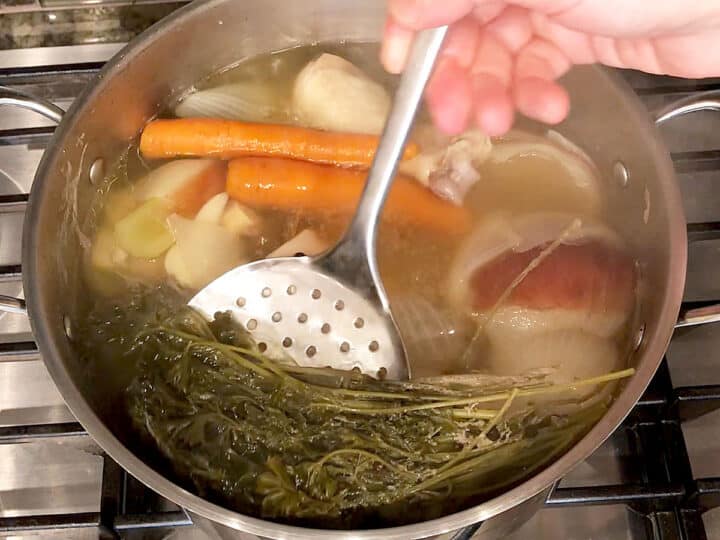
- Strain the broth through a colander. If you can’t bring yourself to discard the chicken, keep it and use it (without the skin) in these chicken patties.
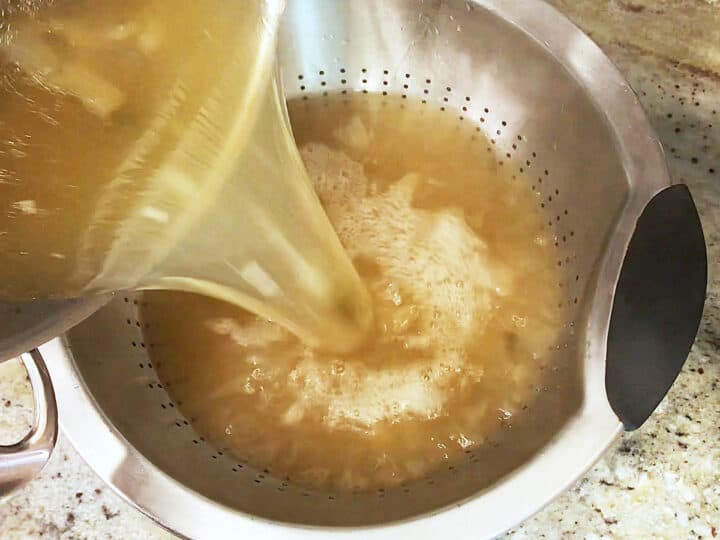
- You can serve the broth immediately or cool it completely and refrigerate it overnight. The next day, remove the fat layer from the top before reheating the broth.
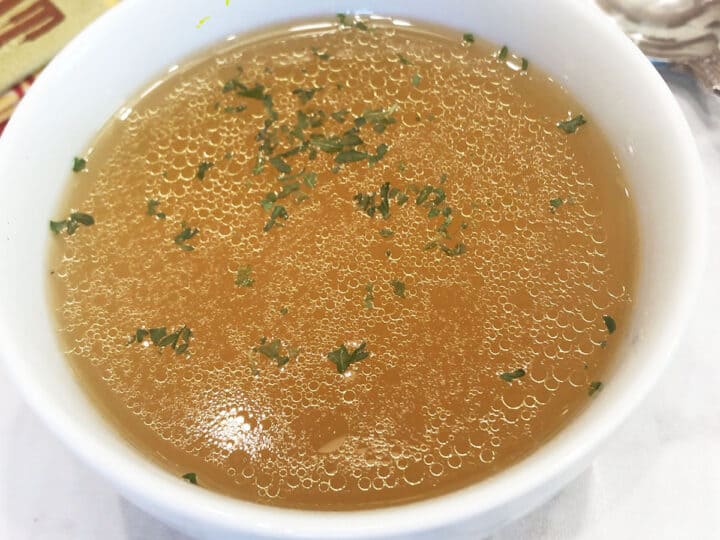
Notes
- The nutrition info is from the USDA database.
- It's important to use bone-in, skin-on chicken pieces such as chicken drumsticks or bone-in thighs. They give the broth flavor and richness. Boneless, skinless chicken breasts, for example, will not work in this recipe. They are too lean.
- This broth keeps well in an airtight container in the fridge for about 5 days. You can divide some of it into individual portions and freeze them in 1-cup containers. 8-ounce mason jars work well for this purpose.
Nutrition per Serving
Save this Recipe!
We will also add you to our weekly newsletter. Unsubscribe anytime. See healthyrecipesblogs.com/privacy/ to learn how we use your email.
Disclaimers
Most recipes are low-carb and gluten-free, but some are not. Recommended and linked products are not guaranteed to be gluten-free. Nutrition info is approximate. Please verify it independently. The carb count excludes non-nutritive sweeteners. Please read these Terms of Use before using any of my recipes.

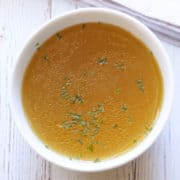

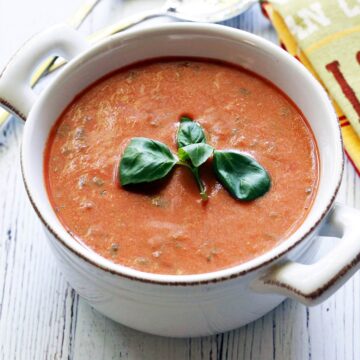
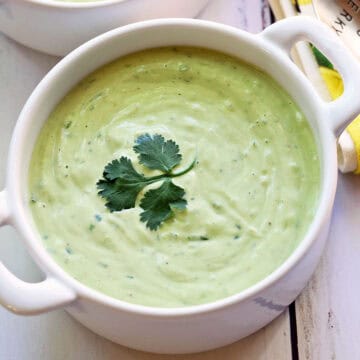

Ruth says
I'm wondering what do you do with the chicken after you make the broth?
Vered DeLeeuw says
Hi Ruth,
The longer you simmer the broth, the richer and tastier it will be, and the drier the meat. One option is to just throw the chicken out. But if you can't bring yourself to do that, use it in these chicken patties.
Birgit Coffman says
Is the simmering time the same for all amounts?
Vered DeLeeuw says
Hi Birgit,
Yes, it is.
Grace says
This was absolutely DELICIOUS! I’m feeling sick and this looked like a quick broth recipe. I was skeptical because it’s been a while since I’ve done homemade broth and I remember them being 10 hours? In the crock pot? Maybe I’m remembering that wrong. This was very flavorful and I plan on making a bunch and freezing for soups or to have on hand!! How long would this be good in the freezer? And truly, this is one of the best homemade broth recipes I’ve ever had. I followed the recipe as is other than giving the garlic a bit of a smash.
Vered DeLeeuw says
Yay! I'm so glad you enjoyed this soup, Grace.
You can freeze it for up to three months.
Get better soon!